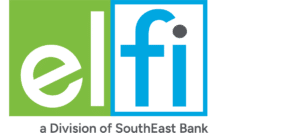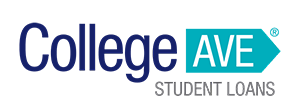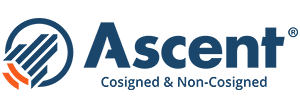“There’s no way I can afford these student loan payments.”
Sound familiar? You’re not the only one. According to the U.S. Department of Education, the national federal student loan cohort default rate — a measure of how many people haven’t made payments for at least 270 days — is over 10%.
If you’re struggling to afford your federal student loan payments, one way to get help is to apply for an income-driven repayment (IDR) plan. But while they can give you some financial relief, there are some serious drawbacks to IDR plans, too.
Here’s what you need to know — plus an alternative student loan repayment solution that may be a better fit for your needs.
How income-driven repayment plans work
With IDR plans, your loan servicer caps your monthly payment at a percentage of your discretionary income. The percentage that you’ll pay and your repayment term varies by plan.
There are four different IDR plans:
- Income-Based Repayment: 10% of your discretionary income with a 20-year term, but your payment will never be higher than your monthly payment under a 10-year Standard Repayment Plan.
- Income-Contingent Repayment: Either 20% of your discretionary income with a 25-year term or what you’ll pay with a fixed repayment term over 12 years, whichever is less.
- Pay As You Earn: 10% of your discretionary income with a 20-year term, but your payment will never be higher than your monthly payment under a 10-year Standard Repayment Plan.
- Revised Pay As You Earn: 10% of your discretionary income with a 20-year term for undergraduate loans, 25-year term if any of your loans were for graduate school.

Introducing
The Aunt Betty Fund
Family and Friends can easily send payments to reduce the burden of debt — directly to the loan servicer.
Donors can support grant programs helping borrowers who are struggling with their payments
Grants offer those with demonstrated financial need an opportunity to get help with their loans.
Pros of income-driven repayment plans
If you can’t afford your payments, it’s important to understand the benefits of IDR plans:
1. You can reduce your monthly payment
If you apply for an IDR plan, the loan servicer bases your monthly payment on your discretionary income and family size. Depending on your circumstances, you could qualify for a dramatically lower payment. Some low-income borrowers even qualify for $0 payments, meaning they don’t have to make payments each month.
2. You can have a portion of your loan balance discharged
After making payments for 20 to 25 years — depending on which IDR plan you’re on — your loan servicer will forgive your remaining loan balance if you have any debt left over. If you have a substantial amount of debt and a low income — and therefore qualify for low monthly payments — you could be eligible for significant loan forgiveness.
3. Payments made under an IDR plan count toward Public Service Loan Forgiveness
If you work for a non-profit organization or government agency, it’s a good idea to enroll in an IDR plan. As a non-profit or government employee, you can qualify for Public Service Loan Forgiveness (PSLF). After working for an eligible employer for ten years and making 120 qualifying monthly payments, the government will forgive your student loans — tax-free.
Payments you make under an IDR plan count as qualifying payments. Even if you’re eligible for a $0 payment, you’ll get credit toward the 120 necessary payments for PSLF.
The 2 Best Companies to Refinance Student Loans
Our Top-Rated Picks for 2024 Offer Low Rates and No Fees

Cons of income-driven repayment plans
While IDR plans can be useful for some borrowers, they’re not for everyone. Here are some drawbacks of IDR plans to keep in mind before applying.
1. Not all borrowers are eligible for IDR plans
Only some student loan borrowers are eligible for IDR plans. To qualify for an IDR plan, you must have federal Direct student loans. If you have other types of federal loans, you can only qualify for an IDR plan if you first consolidate them with a Direct Consolidation Loan.
Private student loan borrowers are not eligible for IDR plans.
2. You’ll pay more in interest over time
Depending on which repayment plan you qualify for, your repayment term could be 20 or 25 years in length. With a longer repayment term than a 10-year Standard Repayment Plan, you could end up paying far more in interest charges.
For example, if you had $35,000 in student loans at 4.53% interest, your monthly payment under a 10-year repayment plan would be $363 per month. By the end of your repayment term, you’d pay a total of $43,589.
If you had an income of $30,000 per year and applied for an income-contingent repayment plan, your monthly payment would start at just $223 per month. However, your repayment term would last for 25 years, and you’d repay a total of $53,617 because of the longer loan term.
3. You have to recertify every year
Each year, you have to recertify your income and family size, meaning you have to submit another IDR plan application. Even if there’s no change to your situation, you still have to send in your information.
If you miss the recertification deadline, the loan servicer will lower your family size — increasing your monthly payment. Depending on what plan you’re on, unpaid interest can be capitalized, adding to the total cost of your loan.
4. Your payment can go up, or you could lose eligibility
Because your monthly payments are determined by your income and family size, they can fluctuate along with any changes in your life. If you receive a big bonus at work or a promotion, your monthly loan payments could increase, or you could lose your eligibility for the IDR plan altogether.
5. You could face a hefty tax bill
After 20 to 25 years of making payments, you can qualify to have your remaining loan balance discharged. However, there are some strings attached to that benefit. The IRS requires student loan borrowers to pay income taxes on any amount that is forgiven at the end of your repayment period, which could cost you thousands of dollars at tax time.
Student loan refinancing: An alternative to IDR plans
While applying for an IDR plan can reduce your monthly payments, you could end up paying thousands more in interest charges. And, you may end up being in debt for decades.
If you want to save debt and pay off your debt sooner — or if you have private loans and are ineligible for an IDR plan — another repayment strategy is student loan refinancing.
With this method, you apply for a loan from a private lender for the amount of your existing debt. You can qualify for a refinancing loan if you have federal or private loans or even a mix of both.
If you have good credit — or have a friend or relative with good credit who can act as a cosigner — you can qualify for a loan with a lower interest rate than you have now, helping you save money over time. With a lower rate and by extending your repayment term, you can even reduce your monthly payment, making it more affordable.
If you think that refinancing sounds like a better option for you than an IDR plan, shop around with different lenders first before applying to maximize your savings. You can use Purefy’s Compare Rates tool to get rate estimates from top refinancing lenders — all in one place with one fast form, and no impact to your credit whatsoever.




















